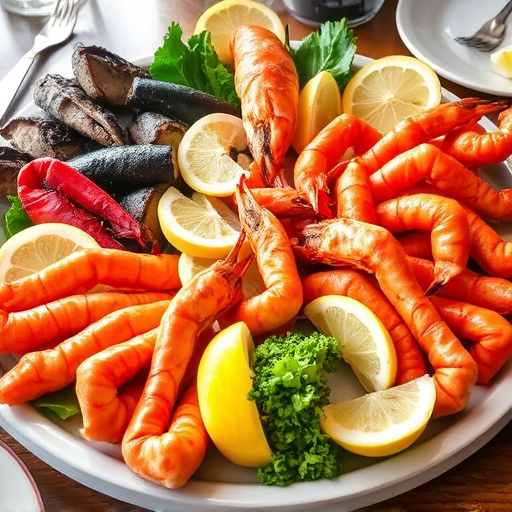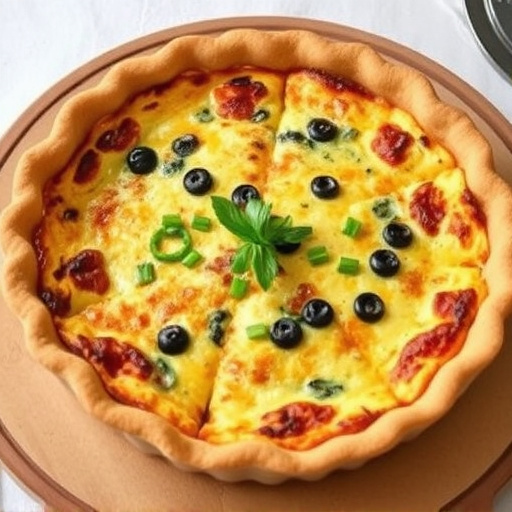Wow Retirement Guests with Delicious, Budget-Friendly Food Ideas
Strategically choose cost-effective yet delicious food options like fresh fruit skewers, mini sandwi…….
Retirement parties are not just about saying goodbye; they’re a celebration of a well-lived life, filled with memories, and achievements. Central to these celebrations is the food—a carefully curated spread that reflects cultural traditions, personal tastes, and the spirit of camaraderie. This article delves into the world of retirement party food, exploring its historical roots, global impact, economic implications, technological innovations, regulatory framework, challenges, and future prospects. By the end, readers will understand why this seemingly simple aspect of a retirement party holds such profound significance.
Definition: Retirement party food refers to the culinary offerings presented at gatherings honoring individuals reaching retirement age. It encompasses a wide range of dishes, from light hors d’oeuvres and finger foods to sit-down meals, catering to diverse dietary preferences and cultural backgrounds.
Core Components:
Cultural Diversity: Retirement parties often reflect the ethnic and cultural tapestry of the retiree’s life. Dishes can vary widely, from traditional comfort foods to international cuisine.
Personal Preferences: The menu should cater to the retiree’s tastes and dietary restrictions. This might include vegetarian, vegan, gluten-free, or other specific needs.
Seasonal Freshness: Utilizing seasonal produce adds a touch of elegance and sustainability to the food experience.
Historical Context:
The concept of retirement party food has evolved over time, mirroring societal changes in aging and lifestyle. Historically, these gatherings were more formal affairs, with elaborate multi-course meals. Today, they tend to be more relaxed, focusing on shared experiences and convivial conversation rather than the opulence of the past.
Significance:
Retirement party food plays a crucial role in fostering social connections, celebrating milestones, and providing a venue for community engagement. It’s not just about feeding people; it’s about nourishing relationships and creating lasting memories.
The international influence on retirement party food is profound, shaped by cultural differences, dietary preferences, and economic factors.
Regional Variations:
North America: Known for its diverse offerings, from classic American comfort foods to ethnic cuisine like Mexican or Italian.
Europe: Offers a rich tapestry of traditional dishes, with France renowned for its elegant presentations and Italy for its emphasis on fresh, regional ingredients.
Asia: Incorporates elements of Eastern cuisine, such as Japanese sushi, Thai curries, and Chinese dim sum, reflecting the diverse culinary heritage of the region.
Trends Shaping the Future:
Sustainability: A growing focus on using locally sourced, organic, and sustainable ingredients is gaining traction worldwide.
Health-Conscious Options: Increasing demand for vegetarian, vegan, and gluten-free options reflects a global movement towards healthier lifestyles.
Personalization: Customized menus tailored to individual preferences are becoming the norm, ensuring every guest feels included.
The economic aspects of retirement party food involve market dynamics, investment patterns, and its role in economic systems.
Market Dynamics:
Catering Services: The catering industry plays a significant role, offering professional services that range from full-service catering to potluck-style arrangements.
Food Cost Inflation: Rising food costs impact menu planning and pricing strategies, with caterers often passing on these expenses to clients.
Investment Patterns:
Event Planning: Retirement parties represent a substantial investment for families and friends, involving venue rental, decorations, entertainment, and food.
Menu Premium: Special menus designed for retirement parties can command a premium due to the perceived quality and uniqueness of the experience.
Economic System Impact:
Retirement party food contributes to local economies by supporting caterers, restaurants, farmers’ markets, and various related businesses. It’s a microcosm of the broader food industry, reflecting trends in consumer spending and culinary preferences.
Technological innovations have revolutionized retirement party food, enhancing efficiency, presentation, and guest experiences.
Innovations That Impact Food Service:
Online Menu Customization: Digital platforms allow for personalized menu choices, making it easier for guests with specific dietary needs to participate.
Food Delivery Services: Companies like Uber Eats and DoorDash have made it convenient to order catering or deliver food directly to the retirement party venue.
Interactive Food Stations: Self-service stations featuring interactive elements, such as fondue pots or build-your-own taco bars, encourage guest engagement.
Future Potential:
The integration of AI and robotics in catering could lead to more precise meal preparation and personalized serving options. 3D printing technology might also revolutionize food presentation, offering unique and customized culinary experiences.
Policies and regulations governing retirement party food ensure food safety, quality, and ethical practices.
Key Frameworks:
Food Safety Standards: Local health departments enforce guidelines for food handling, storage, and preparation to prevent foodborne illnesses.
Labeling Requirements: Regulations mandate accurate labeling of allergens and ingredients, protecting guests with food allergies or sensitivities.
Sustainability Initiatives: Some regions encourage the use of sustainable practices, such as reducing food waste and promoting recycling.
Influence on Development:
These policies shape the way retirement party food is planned and executed, ensuring that gatherings remain safe and enjoyable for all participants. Compliance with regulations also fosters trust among consumers and enhances the reputation of catering services.
Despite its celebratory nature, retirement party food faces several challenges and criticisms.
Main Challenges:
Dietary Restrictions: Accommodating diverse dietary needs while maintaining a cohesive menu can be difficult.
Sustainability Concerns: Balancing the desire for fresh, seasonal ingredients with economic constraints and waste reduction goals.
Budget Constraints: Retirement parties often have limited budgets, which can impact menu choices and catering options.
Proposed Solutions:
Flexible Menu Options: Offer a range of choices, from traditional to innovative dishes, allowing guests to select options that align with their preferences.
Sustainable Sourcing: Partner with local farmers’ markets and sustainable food suppliers to reduce carbon footprints and support regional economies.
Community Involvement: Encourage potluck-style contributions from family and friends to share costs and promote community bonding.
This section presents real-world examples of successful retirement party food applications, showcasing innovative ideas and best practices.
Case Study 1: The Green Table Catering
Based in San Francisco, The Green Table Catering is known for its commitment to sustainability and farm-to-table cuisine. For a recent retirement party, they sourced ingredients from local farms, featuring seasonal dishes like organic vegetable risotto and grass-fed beef tenderloin. They also provided comprehensive allergen information, ensuring guest safety and satisfaction.
Lessons Learned: Emphasizing sustainability and locally sourced ingredients not only meets modern consumer demands but also enhances the overall dining experience.
Case Study 2: The Taste of Tradition
A retirement community in Florida celebrated its residents’ diverse cultural backgrounds by hosting a global cuisine festival. Each resident was invited to share a traditional dish, resulting in a vibrant culinary journey through Italy, Mexico, India, and beyond. Live cooking stations and cultural performances added to the festivities.
Lessons Learned: Embracing cultural diversity through food not only celebrates individual heritage but also fosters intergenerational connections and appreciation for different traditions.
The future of retirement party food looks bright, with emerging trends and strategic considerations shaping its trajectory.
Growth Areas:
Personalized Experiences: Customization will remain a key trend, with menus tailored to individual dietary needs, preferences, and cultural backgrounds.
Sustainable Practices: The demand for eco-friendly options will continue to grow, driving innovation in sustainable sourcing, packaging, and waste reduction strategies.
Tech Integration: Advanced technologies like AI and interactive food stations will play a more prominent role, enhancing guest experiences and streamlining catering operations.
Emerging Trends:
Plant-Based Alternatives: The rise of plant-based diets will lead to more creative vegan and vegetarian options, challenging traditional notions of retirement party fare.
Virtual Celebrations: With technological advancements, virtual retirement parties complete with interactive food experiences could become a reality, bridging physical distances and accommodating diverse guest locations.
Retirement party food is more than just a feast; it’s a reflection of community, culture, and shared memories. From its historical roots to its global impact and future prospects, this culinary tradition continues to evolve, adapting to changing times while preserving the essence of celebration and connection. As society navigates an ever-changing landscape, the role of retirement party food remains indispensable in fostering social bonds and honoring well-lived lives.
Q: What are some budget-friendly ideas for a retirement party meal?
A: Potluck-style gatherings encourage guests to contribute dishes, sharing costs. Simple yet memorable options like a community barbecue or a buffet with a variety of homemade dishes can be both economical and enjoyable.
Q: How do I accommodate guests with dietary restrictions?
A: Offer a diverse menu with multiple options, including designated vegetarian, vegan, gluten-free, and allergen-free choices. Clearly communicate these options on the invitation and provide detailed information at the event.
Q: Are there any cultural considerations when planning retirement party food?
A: Absolutely! Incorporate dishes that reflect the retiree’s cultural background or the diverse backgrounds of your guest list. This can include traditional comfort foods, ethnic cuisine, or a fusion of flavors that celebrate the retiree’s life journey.
Q: How can I make my retirement party food sustainable?
A: Source locally produced ingredients, choose seasonal options, and partner with eco-conscious caterers. Reduce waste by using reusable containers and encouraging guests to take leftovers home. These practices contribute to a greener celebration.

Strategically choose cost-effective yet delicious food options like fresh fruit skewers, mini sandwi…….

Planning a cost-effective yet memorable retirement party? Prioritize diverse, homemade retirement pa…….

When planning a retirement party menu for an indoor space, balance available space and guest numbers…….